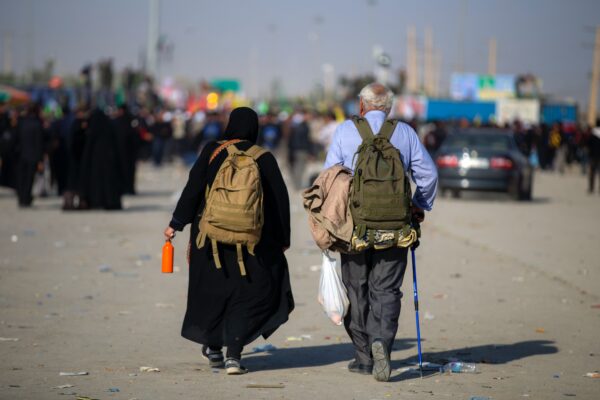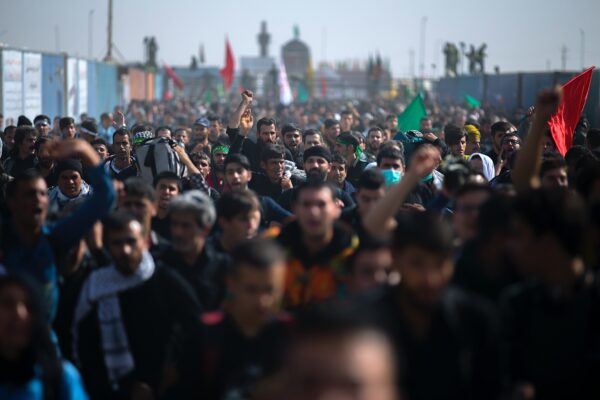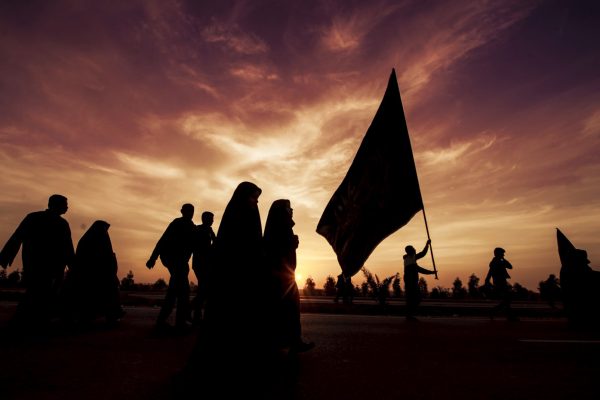Have you been to the beautiful city of Karbala?
Have you been to the beautiful city of Karbala?
The city of Karbala, situated 100km southwest of the capital Baghdad in central Iraq, is one with tremendous history and importance not just for the region but for Muslims across the world. From the Battle of Karbala to the significance of Islamic spirituality to the history of the religion, Karbala is a city with an incredible past.
Here are just 5 facts about Karbala that make this city one of the most important in the Muslim world:
1. The name of Karbala is ancient (and highly debated)
The origin of the name Karbala has numerous theories – and while they all differ in translation and origin, it only goes to show just how important this city was (and is).
One theory of the name Karbala has ties to Babylonia: either the name came from Babylonian terminology of “Karb-ila”, “Qurb-ila”, or “Qurb-ila Allah”, which means “closeness to God”; or it could have originated from the Arabic word “Kar Babel” which was a collection of ancient Babylonian villages that included Nainawa, Al-Ghadiriyya, Karbella, Al-Nawaweess, and Al-Heer.
Another theory to the origin of the name Karbala was put forth by Greek-Byzantine Muslim scholar Yaqut al-Hamawi during the late Abbasid period, where he concluded that Karbala describes the place where Imam Hussein, the grandson of the Prophet Muhammed, was killed – a place of “soft earth”, or “Al-Karbalat”.
A final theory about the name of Karbala is that the name comes from two Arabic words: “karb” and “bala”. “Karb”, meaning “grief and sorrow”, and “bala”, meaning “affliction”, is also describing the historical events of the Battle of Karbala.
2. The city witnessed the Battle of Karbala
In October 680AD (or during Muharram in 61AH), one of the most important Islamic battles happened in the city: the Battle of Karbala, which saw Imam Hussein, the grandson of the Prophet Muhammed, battle against the forces of Yazid I – Caliph of the Umayyad Empire. Imam Hussein was eventually brutally killed by the army of Yazid, with his severed head put on display in a shockingly ugly end to the battle. The rest of the family of the Prophet were captured and marched to what is now Syria to the court of Yazid, where they were thrown into prisons.
The youngest children killed from the battle were Ali Asghar, the son of Imam Hussein, who was six months old when the opposing army shot an arrow at the baby, and Sakina, the daughter of Imam Hussein, who was four years old when she succumbed to her wounds and burns in the prison of Yazid.
The Battle of Karbala was a turning point for the Muslim world – Imam Hussein, who disagreed with the rule of Yazid I and made the decision to fight against Yazid who had sought to kill him and end his opposition, represented hope, truth, and the memory of the Prophet for many Muslims who choose to follow him. The Battle of Karbala is still commemorated today, with millions of Shia Muslims – and Sunni, Sufi, and non-Muslims alike – making the pilgrimage to his shrine and burial place in Karbala.
3. Karbala is home to the burial place of Imam Hussein and many of the Prophet’s family and companions
After the tragic events of the battle of Karbala, many of those martyred were buried at the site of the battle or taken away by family and surviving members – most famously, Imam Hussein and Hazrat Abbas, who was the son of Imam Ali, were buried on the spot of the battle. These two shrines make up the largest gathering point in the city of Karbala, where their two shrines face each other in a tragic but beautiful remembrance of their sacrifice.
These mausoleums are one of the wonders of Karbala, which draw in millions of Muslims every year to pay their respects to those killed during the Battle of Karbala.
4. The city is renowned for being one of the major centers of religious learning
Home to the largest universities of AhlulBayt University and The University of Karbala, the city has not only been the center of learning sciences, medicine, and law, but also religious studies, or hawza as well. Students in Karbala take pride in learning Islamic sciences, Islamic law, and religious studies in the center of such a historical and deeply important city to the religion of Islam – and many graduate from these universities with the knowledge and qualifications to become sheikhs, teachers, and doctors.
While many Shia Muslims, in particular, regard Karbala alongside the cities of Najaf and Qom to be the centers of religious learning, the city’s universities offer a wide variety of subjects and fields for people from all backgrounds to study and graduate from.
5. The Arbaeen Walk in Karbala is the largest public gathering in the world, with 22 million people every year
To commemorate and pray for those who died during the Battle of Karbala, Muslims gather in Karbala for Arbaeen – 40 days after the day of Ashura, when Imam Hussein and the Prophet’s family were killed or captured – making it the largest public gathering in the world. Larger than the annual Hajj, Arbaeen draws in at least 22 million people on average per year, with Muslims from all walks of life flying in from all parts of the world to pay their respects to the legacy of Imam Hussein.
To welcome pilgrims and to keep the legacy of Imam Hussein and his goodness alive, local Iraqis will famously open up their homes to travelers in need of rest and food, and set up tents along the walk that pilgrims will take, offering everything from food, tea, sleeping areas, and the best of Iraqi hospitality. The Arbaeen Walk, which culminates in the beautiful city of Karbala, is perhaps one of the most moving examples of the power of this ancient and profound city.





